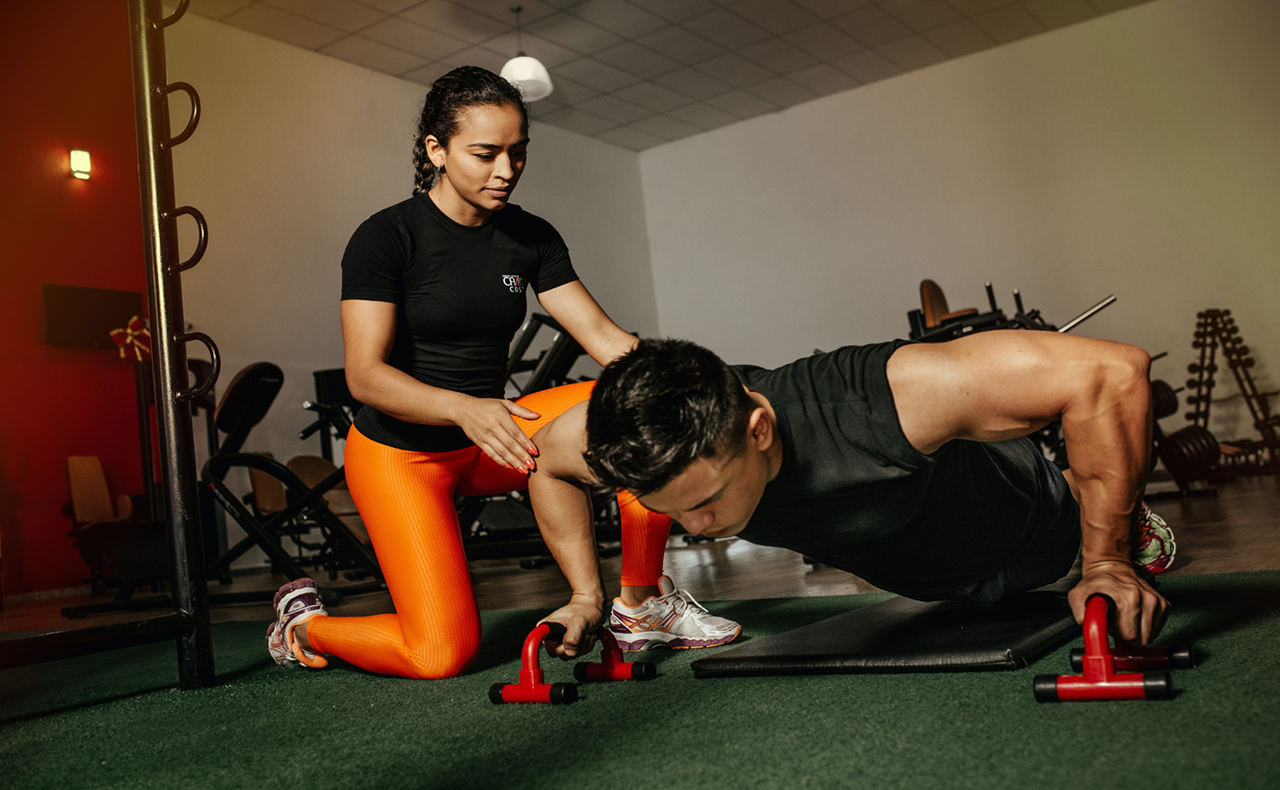Navigating a Pandemic: Tips for Athletic Trainers Serving the Sport Community

Published
Jump to Top Tips for Athletic Trainers
Several months into the COVID-19 pandemic, the sport world has found itself working to salvage previously postponed competitions, launch new seasons, and analyze the costs and benefits of holding competitive events with or without fans present. Athletes, coaches, parents, and sport stakeholders continue to feel the impact of the Coronavirus; while sport organizations have made great strides to save seasons (and careers), it has not gone without immense sacrifice and stress. Athletes are finding themselves isolated from their families, living in bubbles in order to compete, and performing in arenas full of virtual fans. Coaches are attempting to run practices and training camps with appropriate social distancing guidelines and while enforcing mask policies. Athletic trainers and strength and conditioning coaches are working together now more than ever to make sure athletes are able to return to play safely after taking so much time off from training and/or competing. Although athletes and sport fans alike are excited for the return of competition, fear lurks in the background as players, coaches, and staff continue to test positive for COVID-19.
The stress that comes along with returning to play remains immense, making it essential that mental performance consultants and mental health practitioners continue to mitigate the effects of this extremely fluid situation.
The emotional rollercoaster is real
With the constant influx of information, changes to daily routines, uncertainty with personal health and the health of others coupled with rapidly changing reports, it is normal to feel like we are on an emotional rollercoaster, all of which is physically and emotionally draining. Before the pandemic, one in five US adults reported mental health concerns. Since the pandemic, an alarming increase in symptoms have been reported: US adults reported three times the amount of anxiety-related symptoms and four times the amount of depressive symptoms than in 2019.
The first step in managing our experience is to recognize how we feel. COVID-19 continues to impact everyone differently and the impact it is having on each of us is completely normal and valid. Some common feelings are fear, anxiety, loss, relief, confusion, disappointment, exhaustion, frustration, and anger. While we may still feel physically isolated, we are not emotionally on an island; the reality is, plenty of people are experiencing similar emotions. Acknowledge what you’re feeling, identify those emotions, and work on trying to understand and accept them. Anticipate that your emotions will also likely change over time as the pandemic evolves.
Put basic needs first
You may have heard the phrase “Maslow before Bloom,” meaning right now it’s important to address our basic physiological and safety needs first (Maslow’s hierarchy of needs). Do what you can to take care of needs such as food, water, shelter, clothing, sleep, employment, and health as much as possible. For some, these may be considered daily luxuries and scarce during a widespread crisis, meaning they must be prioritized. We have to survive before we can thrive.
If you or those you serve are in need of food or housing assistance, there are a variety of programs and resources available. A few of note in the United States are Volunteers of America, Meals on Wheels, Feeding America, National Low Income Housing Coalition, Salvation Army, and Find Your Local VA Medical Center (for Veterans specifically).
Maintain virtual communication
Why is it natural for us to want to see and be with family, friends, teammates, neighbors, and others? We are hard-wired for connection. While we may be currently limited in our ability to have face-to-face interactions, virtual means such as text, FaceTime, Skype, Zoom, social media, or other types of technology help us stay connected. Additionally, it is important to maintain communication with our healthcare providers, even at a distance. Luckily, it is now easier to preserve this continuity of care by using telehealth services.
Stay updated
As our local and nationwide situation continues to evolve, it is important to stay current on reputable COVID-19 updates, such as from the World Health Organization and the Centers for Disease Control and Prevention. Additionally, it’s important to be aware of current international travel restrictions and protocols, both for those who may be leaving or returning to the United States. These updates may impact you or those you serve as we consider travel for sport, work, school, and pleasure (i.e., seeing family and friends). While the feelings related to ongoing changes can be difficult to navigate, it is important to recognize that the only thing we have control over is ourselves, more specifically, our attitude, our effort, and our actions. We can rely on our experience, our strengths, and our support systems to respond to uncertainty and stress with resilience and composure.
While we should remain vigilant to react in a timely manner, know that it is okay to take a break and disconnect. We can find opportunities to turn off our TVs and put down our devices in order to mentally and emotionally recover.
Exercise is medicine
Exercise helps to manage stress, fight off illnesses, and maintain positive mental health. While not all of us are able to go to the gym, there are other creative alternatives to help you stay physically active while social distancing. If you opt to exercise at home, try seeking out new, safe ideas from reputable sources such as those curated by the American College of Sports Medicine. For individuals with an existing health condition, review and respect any guidelines provided by your medical team before engaging in any new workout activities.
Monitor your mental health
Our experience with stressful events can lead to a variety of emotions and a slippery slope of “why me” and “what ifs.” Individuals with a history of mental health concerns, those more susceptible to contracting COVID-19, and those who may be significantly economically impacted by this pandemic (e.g., hourly or low-wage workers, those experiencing homelessness, or those who are unemployed), may experience heightened mental health symptoms during this time. Also, increased stigma and xenophobia can impact the emotional well-being of racial and ethnic minority groups, particularly those within Asian communities. Specifically, Chinese immigrants and Chinese Americans have experienced increased racism and increased depression directly related to the pandemic. Two mechanisms that seem to help mediate these issues include strengthening one’s ethnic identity and engaging in physical activity.
Now, more than ever, it is important to pay attention to our mental health, extend compassion to others, and work to create some semblance of normalcy in our day-to-day lives. The following are resources to help manage the COVID-19 situation and mental health:
- American Counseling Association
- National Suicide Prevention Lifeline
- CDC: Mental Health and Coping
- Coronavirus Crisis: Staying Safe, Smart, and Kind
Specific tips for Athletic Trainers
- Provide realistic rehabilitation goals and expectations: Return-to-play timelines may be impacted by things beyond your and an athlete’s control. Therefore, demonstrating flexibility and transparency in your expectations around rehabilitation may alleviate some of the stressors associated with an athlete’s injury. As some athletes may want to rush the process, your demeanor and affirming realistic expectations will help them to keep realistic expectations as well. It could also be beneficial to collaborate with strength and conditioning coaches on helping athletes return to training safely.
- Wear your athletic training hat: You are often the first line of defense for athletes. Athletic trainers note how athletes feel as if they play the role of counselors, friends, and coaches in addition to their role as an athletic trainer. If you haven’t already, consider revisiting what your main role is within the environment you work and ensure the services you provide are consistent with your role and training. Should an athlete benefit from support in areas outside of that role, consider making an appropriate referral to another qualified professional. You don’t have to carry the weight alone.
- Be aware of burnout: At the end of the day, service providers are people, too. Therefore, it is not uncommon nor impossible for you as athletic trainers to experience stress, anxiety, and burnout as a result of how the pandemic has impacted your professional and personal life. It is okay, and actually encouraged, to take time for yourself and your needs. Determine methods of self-care that you want to add to your daily or weekly routines moving forward. Examples are getting enough sleep, engaging in personal hobbies, eating nutritious foods, being physically active, practicing gratitude, or journaling. Done consistently, these actions will help you to feel more control and comfort, while modeling healthy, positive behaviors that you can share with your athletes.
- Encourage help-seeking for the mental component: Because athletes trust you, they may be more likely to follow up with a referral to a mental health provider or Certified Mental Performance Consultant®️ if you initiate the conversation. In doing so, remind athletes that you care and that you think they would benefit from working with someone who is qualified to discuss their mental state and provide valuable coping strategies. Just as you would refer an athlete to a specialist regarding a physical injury, it’s important to make sure you trust the person you’re referring them to, understand their competencies, and can prepare the athlete for next steps. With the complexity of COVID-19 impacting numerous aspects of our lives, it’s even more important to have a strong multi-disciplinary network of trusted colleagues. When possible, using a triangulation of care between you, the mental health or mental performance professional, and the athlete can aid in the referral process and provision of services.
In this time of uncertainty, focus on what you can control, even when it feels as if there is little you can control. Utilize your networks and these tips to take it one day at a time. As we keep moving forward, remember that kindness is always free and we will get through this by supporting each other. “Always be kind, for everyone is fighting a hard battle.” - Plato
The Association for Applied Sport Psychology has also compiled tips for the following populations:
- Athletes and other Performers
- Coaches, Teachers, and Instructors
- Athletic Directors and Sports Administrators
- Parents and Guardians
For additional resources related to managing the COVID-19 pandemic for the sport community, please visit the Association for Applied Sport Psychology (AASP) and member organizations from the Joint Commission on Sports Medicine & Science.
Authors
Thank you to the following AASP members for their contributions:
Megan Byrd, PhD, CMPC - Web Presence Committee Member
Leeja Carter, PhD - Diversity & Inclusion Division Head
Kristen Dieffenbach, PhD, CMPC - Fellow
Natalie Durand-Bush, PhD - Immediate Past President and Fellow
Kensa Gunter, PsyD, CMPC - President and Fellow
Brandonn Harris, PhD, CMPC, NCC - Certification Council Chair
Caitlyn Hauff, PhD - Web Presence Committee Member, Eating Disorders Special Interest Group Co-Coordinator
Abby Keenan, MS, CMPC - Web Presence Committee Chair, Business Ownership Special Interest Group Member, Study & Practice of Supervision Special Interest Group Member
Michele Kerulis, EdD, LCPC, CMPC - Web Presence Committee Member, Media in Sport Special Interest Group Coordinator, Ethics Committee Member
Share this article:
Published in:




